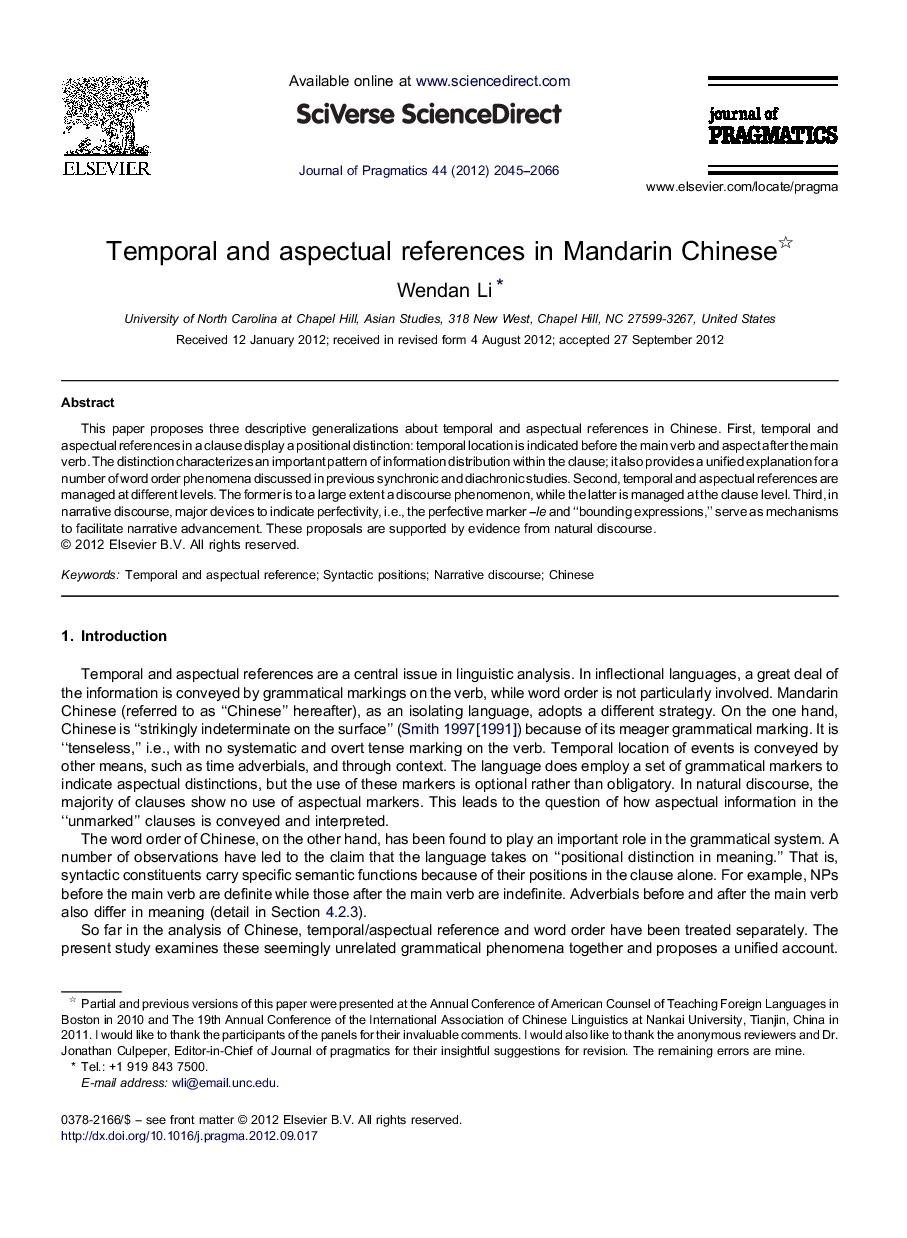| Article ID | Journal | Published Year | Pages | File Type |
|---|---|---|---|---|
| 933014 | Journal of Pragmatics | 2012 | 22 Pages |
This paper proposes three descriptive generalizations about temporal and aspectual references in Chinese. First, temporal and aspectual references in a clause display a positional distinction: temporal location is indicated before the main verb and aspect after the main verb. The distinction characterizes an important pattern of information distribution within the clause; it also provides a unified explanation for a number of word order phenomena discussed in previous synchronic and diachronic studies. Second, temporal and aspectual references are managed at different levels. The former is to a large extent a discourse phenomenon, while the latter is managed at the clause level. Third, in narrative discourse, major devices to indicate perfectivity, i.e., the perfective marker –le and “bounding expressions,” serve as mechanisms to facilitate narrative advancement. These proposals are supported by evidence from natural discourse.
► Temporal location is indicated before the main verb; aspect after the verb. ► Temporal reference is a discourse phenomenon; aspectual reference is managed at the clause level. ► Perfectivity devices serve as mechanisms for narrative advancement.
